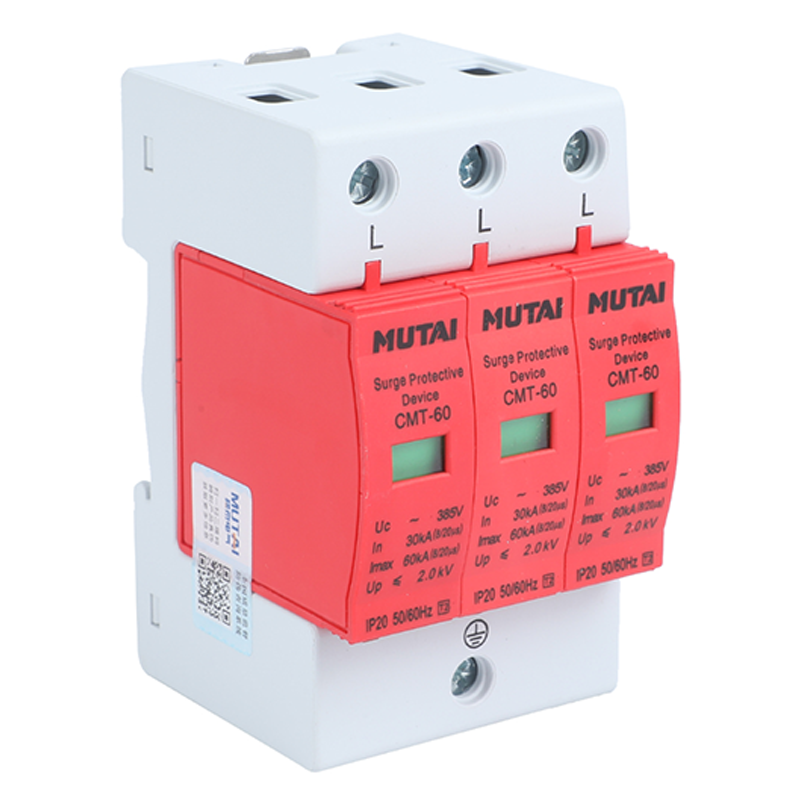Surge protective device (SPD) is an electronic device that provides safety protection for various electronic equipment, instruments, and communication lines. When a sudden current or voltage surge occurs in electrical lines or communication lines due to external interference, the surge protector can quickly conduct and divert the surge to prevent damage to other equipment in the circuit. There are four key parameters to consider when analyzing SPD:
1.Maximum continuous operating voltage (Uc) Uc refers to the maximum rms voltage (RMS) or DC voltage that can be applied to SPD protection mode. Essentially, it represents the rated voltage of the SPD. The Uc value is related to the service life and voltage protection level of the SPD. Although choosing a higher Uc value can extend the service life of the product, it will also increase the residual voltage, which is detrimental to the protected object.
2.Nominal discharge current (In) In is the peak current of the 8/20μs current wave flowing through the surge protector. The SPD standard specifies a series of In values. When designing and manufacturing a specific model of SPD to achieve a specific level, the corresponding In value is selected from the In series for testing. A successful test determines the selected value as the In value of the SPD.
3.Maximum discharge current in class II test (Imax) Imax represents the peak current of the 8/20μs current wave flowing through the surge protector in Class II testing. Although the definition of this parameter is similar to the nominal discharge current (In), the SPD standard provides a range of Imax values next to the In series, and within the same level, Imax > In. Therefore, an SPD passing a test at a specific In level does not guarantee that an SPD with the same Imax level will also pass the test. Although In and Imax are both the peak values of the 8/20μs current wave, the peak value and the number of times the current passes during the test are different.
4.Voltage protection level (Up) , also known as residual voltage, refers to the voltage across the SPD when a current with a specified waveform flows through the SPD after the SPD is started. This parameter is crucial to protect the withstand voltage of the protected equipment and should be lower than the withstand voltage of the protected equipment.
Understanding and analyzing these parameters is critical for surge protection devices. Proper consideration and selection of SPDs based on these parameters will ensure that they provide effective protection for electronic equipment, instruments and communication lines, ultimately minimizing damage from surges and spikes.
Post time: Dec-15-2023




